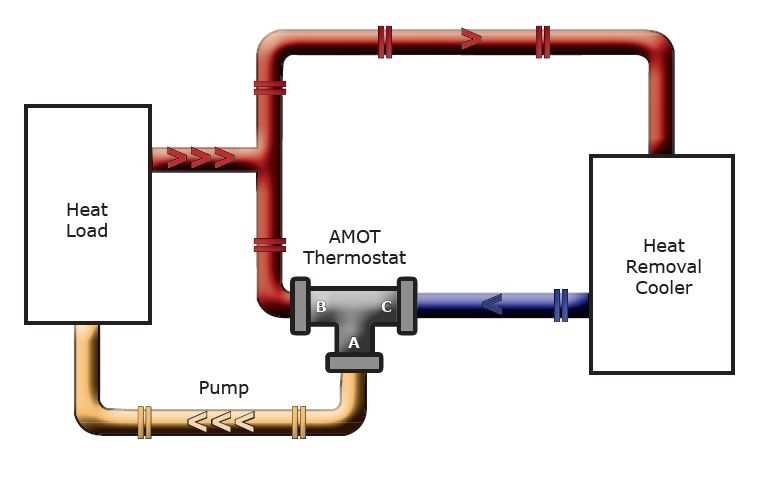
In heating and cooling systems, three-way mixing valves are essential components that help regulate the temperature of the air or water being circulated. These valves are commonly used in HVAC systems, where they control the blending of hot and cold water to achieve the desired temperature for heating or cooling.
A typical three-way mixing valve diagram consists of three main sections: the inlet, the mixing chamber, and the outlet. The inlet section is where the hot and cold water streams enter the valve. The mixing chamber is where these streams are combined and mixed together, and the outlet section is where the blended water is discharged.
The purpose of the mixing chamber is to maintain a constant temperature by adjusting the flow rates of the hot and cold water streams. This is achieved by using a control mechanism, such as a thermostat or a temperature sensor, which measures the temperature of the mixed water and sends a signal to the valve actuator.
The valve actuator responds to the signal by adjusting the position of the valve’s internal mechanism, allowing more or less hot or cold water to flow into the mixing chamber. This control mechanism ensures that the desired temperature is maintained, regardless of any fluctuations in the temperature of the hot or cold water streams.
Understanding the Basics of 3-Way Mixing Valve Diagram
In HVAC systems, a 3-way mixing valve plays a crucial role in controlling the temperature of a fluid in a heating or cooling system. To understand how the valve works, it is essential to have a clear understanding of the 3-way mixing valve diagram.
A 3-way mixing valve diagram depicts the components and the flow path of the fluid within the valve. It consists of three primary ports: the hot water inlet, the cold water inlet, and the mixed water outlet. The valve is designed to regulate the temperature of the fluid by controlling the flow between the hot and cold water inlets.
At the heart of the 3-way mixing valve is a motorized actuator that moves the internal valve plug or ball to control the flow of the fluid. The actuator receives signals from a thermostat or a temperature sensor, which measures the temperature of the fluid downstream. Based on these signals, the actuator adjusts the position of the valve plug to maintain the desired temperature at the mixed water outlet.
The operation of the 3-way mixing valve can be described by two basic flow scenarios. In the first scenario, when the desired temperature at the mixed water outlet is higher than the incoming cold water temperature, the valve diverts more hot water flow than cold water flow. This results in a higher temperature at the mixed water outlet.
In the second scenario, when the desired temperature is lower than the incoming hot water temperature, the valve diverts more cold water flow. As a result, the temperature at the mixed water outlet decreases. By continuously modulating the position of the valve plug, the actuator ensures a precise and stable temperature control.
- Key Components of a 3-way Mixing Valve Diagram:
- Hot water inlet
- Cold water inlet
- Mixed water outlet
- Motorized actuator
- Valve plug or ball
- Thermostat or temperature sensor
In conclusion, understanding the basics of a 3-way mixing valve diagram is crucial for proper understanding and implementation of HVAC systems. The diagram illustrates the key components and the flow path within the valve, with the motorized actuator controlling the position of the valve plug to maintain the desired temperature at the mixed water outlet.
What is a 3-Way Mixing Valve?
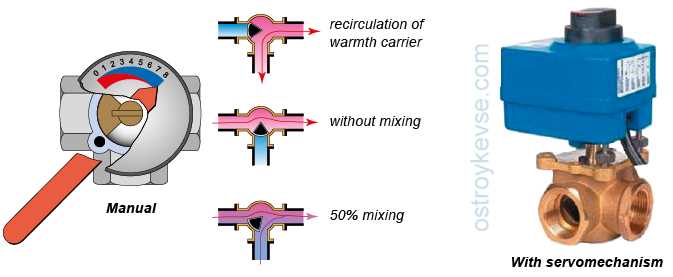
A 3-way mixing valve is a type of valve used in heating and cooling systems to control the temperature of the fluid being circulated. It is designed to mix hot and cold water or air in order to achieve the desired temperature. This type of valve is commonly used in HVAC (Heating, Ventilation, and Air Conditioning) systems.
The valve consists of three ports or openings, hence the name “3-way.” These ports are labeled as the hot water inlet, cold water inlet, and mixed water outlet. The hot and cold water flows into the valve and is mixed together before being sent out through the outlet. The valve can be controlled manually or automatically, depending on the specific application.
The purpose of the 3-way mixing valve is to maintain a consistent and controlled temperature in a heating or cooling system. It is often used in systems where the temperature needs to be adjusted based on the demands of the environment or the preferences of the occupants. For example, in a heating system, the valve can be used to adjust the temperature of the water flowing through the radiators or underfloor heating systems.
Overall, a 3-way mixing valve plays a crucial role in maintaining comfort and efficiency in heating and cooling systems. By allowing the precise control of the temperature, it helps ensure that the desired temperature is achieved while minimizing energy consumption. It is an essential component for achieving optimal comfort and energy efficiency in HVAC systems.
Components of a 3-Way Mixing Valve Diagram
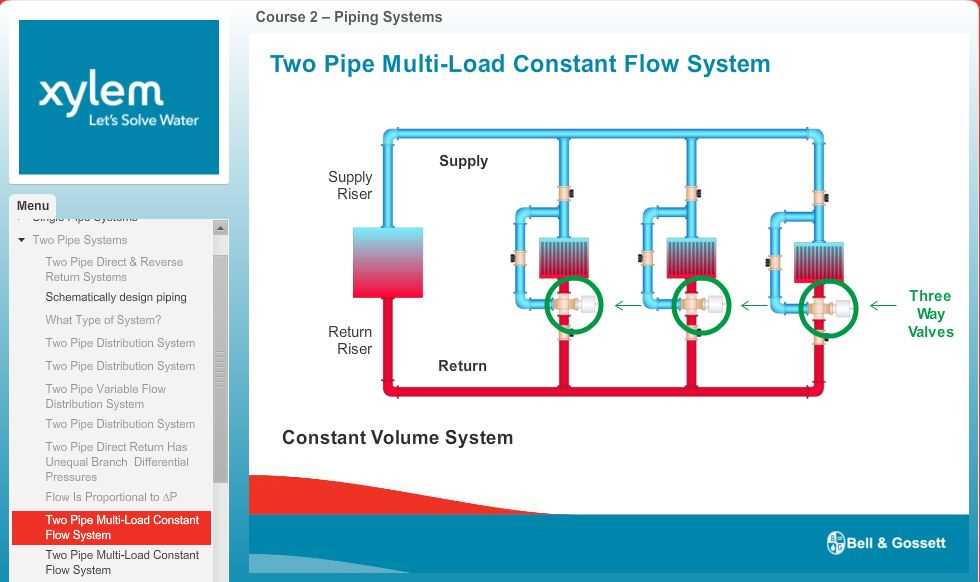
A 3-way mixing valve diagram depicts the various components that make up a system using a 3-way mixing valve. This type of valve is commonly used in heating and cooling systems to blend hot and cold water or air to achieve the desired temperature output. Understanding the components of this diagram is essential for proper installation and troubleshooting.
1. Mixing Valve: At the heart of the diagram is the 3-way mixing valve itself. This valve typically consists of three ports: a hot port, a cold port, and a mixed port. The hot and cold ports connect to the respective supply lines, while the mixed port delivers the blended fluid or air to the intended outlet. The positions of the valve indicate the proportion of hot and cold inputs.
2. Sensors: Temperature sensors are critical components in a 3-way mixing valve diagram. These sensors detect the temperature of both the hot and cold inputs, providing feedback to the control system. This feedback allows the control system to adjust the valve position accordingly to maintain the desired setpoint temperature.
3. Control System: The control system, often consisting of a controller and an actuator, monitors the temperature feedback from the sensors and sends signals to adjust the valve position. The controller processes the temperature data and determines the appropriate valve position, while the actuator physically moves the valve to achieve the desired blend of hot and cold inputs.
4. Supply Lines: The diagram may also include supply lines that deliver the hot and cold fluids or air to the mixing valve. These supply lines are typically connected to the respective ports on the valve, allowing the valve to control the flow and temperature output.
5. Outlet: The outlet represents the point where the blended fluid or air is delivered to the desired location, such as a heating or cooling unit. The outlet can vary depending on the specific application of the 3-way mixing valve, but its purpose is to distribute the controlled temperature output.
Overall, a 3-way mixing valve diagram provides a visual representation of the key components involved in achieving the desired temperature output in a heating or cooling system. By understanding these components and their interactions, technicians and engineers can effectively install and troubleshoot these systems, ensuring optimal performance and comfort.
Working Principle of a 3-Way Mixing Valve
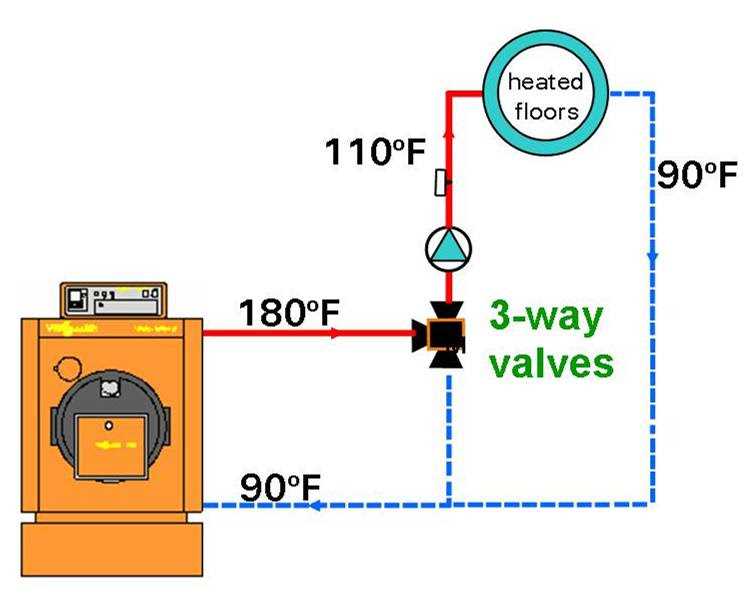
3-way mixing valves are essential components in hydronic heating systems, allowing for the precise control of the temperature of the heating fluid. These valves are designed to blend hot water from the boiler and cooler water from the system return in order to achieve the desired set point temperature.
The working principle of a 3-way mixing valve involves three main ports: the hot water inlet, the cool water inlet, and the mixed water outlet. Inside the valve, there is a movable ball or disc that controls the proportion of hot and cool water flow. When the valve is open, hot water flows in from the boiler through the hot water inlet, and cool water flows in from the system return through the cool water inlet. The movement of the ball or disc determines the proportion of each flow.
The position of the ball or disc is controlled by an actuator, which can be manual, pneumatic, or electric. The actuator receives signals from a room thermostat or a temperature sensor, allowing for precise temperature control. When the desired set point temperature is achieved, the actuator adjusts the position of the ball or disc to maintain the temperature.
When the valve is fully open, the hot water and cool water flows are at their maximum, resulting in a higher mixed water temperature. As the valve closes, the proportion of cool water increases, lowering the mixed water temperature. This allows for fine-tuning of the heating system to provide optimal comfort and energy efficiency.
Overall, the working principle of a 3-way mixing valve is to blend hot and cool water in proportion to achieve the desired temperature for heating systems. With precise control and adjustment, these valves play a crucial role in maintaining optimal and consistent heating conditions in various applications.
Benefits of Using a 3-Way Mixing Valve
When it comes to controlling the flow of hot and cold water in a system, a 3-way mixing valve offers several benefits. This type of valve is commonly used in HVAC systems and domestic hot water systems to regulate the water temperature and ensure optimal comfort and energy efficiency.
1. Precise Temperature Control: One of the main advantages of a 3-way mixing valve is its ability to provide precise temperature control. By adjusting the position of the valve, users can easily control the ratio of hot and cold water flow, allowing them to achieve the desired temperature output. This level of control is essential for maintaining consistent and comfortable water temperatures, especially in applications such as showers, baths, and domestic hot water systems.
2. Energy Efficiency: Another important benefit of using a 3-way mixing valve is its ability to improve energy efficiency. By mixing hot and cold water, the valve prevents unnecessary energy consumption by reducing the need for excessive heating or cooling. This is particularly beneficial in HVAC systems, where the valve can help maintain optimal temperature levels without constantly relying on the boiler or chiller to provide the desired temperature. As a result, homeowners and building managers can save on energy costs and reduce their carbon footprint.
3. System Versatility: 3-way mixing valves are highly versatile and can be used in a wide range of applications. Whether it’s for residential, commercial, or industrial use, these valves can easily adapt to different systems and requirements. They can be incorporated into new installations or retrofitted into existing systems, making them a flexible solution for various applications.
4. Freeze Protection: In cold climates or outdoor applications, a 3-way mixing valve can provide freeze protection by controlling the flow of hot and cold water. By preventing the water from freezing, the valve helps to avoid damage to pipes and equipment, ensuring the longevity of the system. This feature is particularly important for outdoor heating systems, snow melting systems, and other applications where extreme cold temperatures are a concern.
Overall, a 3-way mixing valve offers precise temperature control, energy efficiency, system versatility, and freeze protection benefits. It is an essential component in many water heating systems, providing improved comfort, reduced energy consumption, and peace of mind for users.
Common Applications of 3-Way Mixing Valves
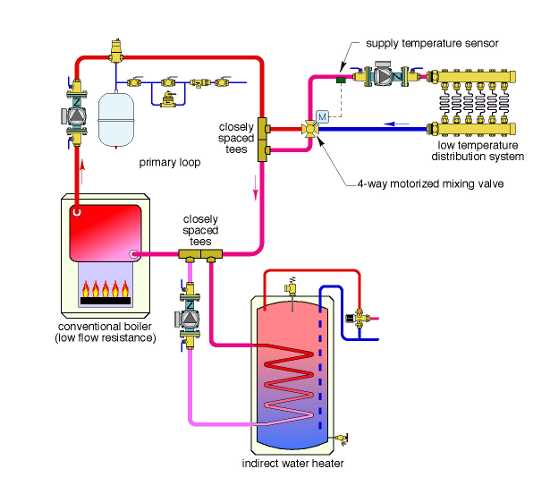
3-way mixing valves are commonly used in various heating, ventilation, and air conditioning (HVAC) systems, as well as in industrial processes that require precise temperature control. These valves play a crucial role in regulating the flow of hot and cold water in order to achieve the desired mixed temperature for different applications.
One common application of 3-way mixing valves is in domestic hot water systems. These valves are often used to control the temperature of the water supplied to faucets, showers, and other points of use in residential and commercial buildings. By blending hot and cold water, the valves ensure that the water reaches the desired temperature, providing comfort and preventing scalding or discomfort from excessively hot or cold water.
In HVAC systems, 3-way mixing valves are commonly used for controlling the temperature of air supplied to different zones or rooms. By blending hot and cold water, these valves allow for precise temperature control, ensuring that each zone or room is maintained at the desired temperature. This improves comfort and energy efficiency by minimizing the need for excessive heating or cooling.
Another common application of 3-way mixing valves is in industrial processes that require precise temperature control. These valves can be used in applications such as chemical processing, food and beverage production, and pharmaceutical manufacturing, among others. By regulating the flow of hot and cold fluids, the valves ensure that the desired temperature is maintained, allowing for optimal process conditions and product quality.
In summary, 3-way mixing valves are widely used in various applications where precise temperature control is required. Whether it is in domestic hot water systems, HVAC systems, or industrial processes, these valves play a crucial role in maintaining comfort, preventing scalding, improving energy efficiency, and ensuring optimal process conditions.
Troubleshooting and Maintenance of 3-Way Mixing Valves
Proper troubleshooting and regular maintenance are essential to ensure the efficient and reliable operation of 3-way mixing valves. Here are some common issues that may arise and steps to address them:
1. Insufficient heating or cooling:
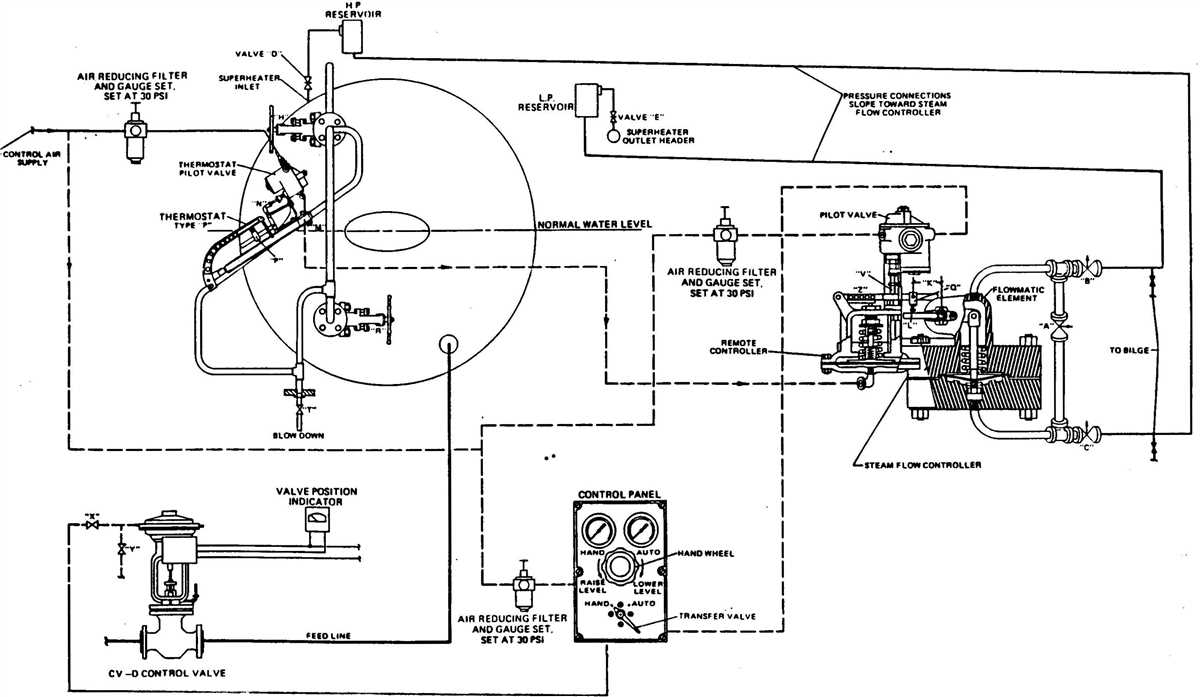
If the system is not providing sufficient heating or cooling, it may indicate a problem with the 3-way mixing valve. In such cases, check the following:
- Ensure that the control signal is reaching the valve and that it is operating correctly.
- Inspect the valve for any blockages or debris that may be hindering the flow of the heating or cooling medium.
- Check the temperature sensors for accuracy and replace them if necessary.
- Verify the valve size and flow capacity to ensure it is suitable for the system requirements.
2. Erratic temperature control:
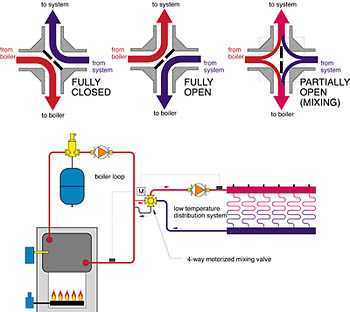
If the temperature control is unstable or fluctuating, it may be caused by issues with the 3-way mixing valve. Take the following steps to troubleshoot:
- Inspect the valve and actuator for any mechanical failures or loose connections.
- Check the control signal for stability and ensure it is properly calibrated.
- Verify that the temperature sensors are functioning correctly and calibrated accurately.
- Clean or replace the valve cartridge if it is damaged or worn out.
3. Leakage:
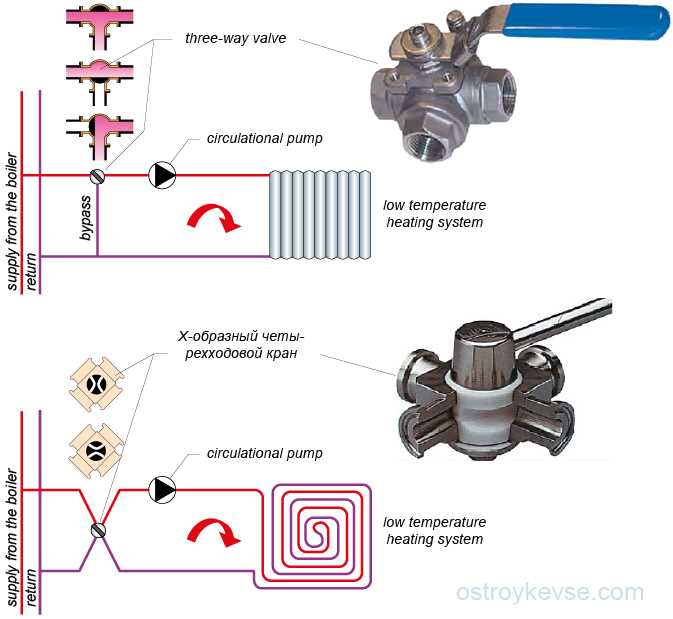
Leakage from the 3-way mixing valve can lead to energy waste and decreased system efficiency. To address this issue, perform the following steps:
- Inspect the valve body and connections for any signs of leakage.
- Tighten any loose fittings or connections.
- Consider replacing the valve seals if they are worn out or damaged.
- Verify that the valve is rated for the system pressure and temperature to prevent excessive stress that may cause leaks.
Regular maintenance should include cleaning the valve and actuator, inspecting and replacing worn-out parts, and ensuring proper calibration. It is also advisable to consult the manufacturer’s guidelines for specific maintenance procedures and intervals.
By addressing these common issues and maintaining the 3-way mixing valve properly, you can ensure optimal system performance, energy efficiency, and occupant comfort.